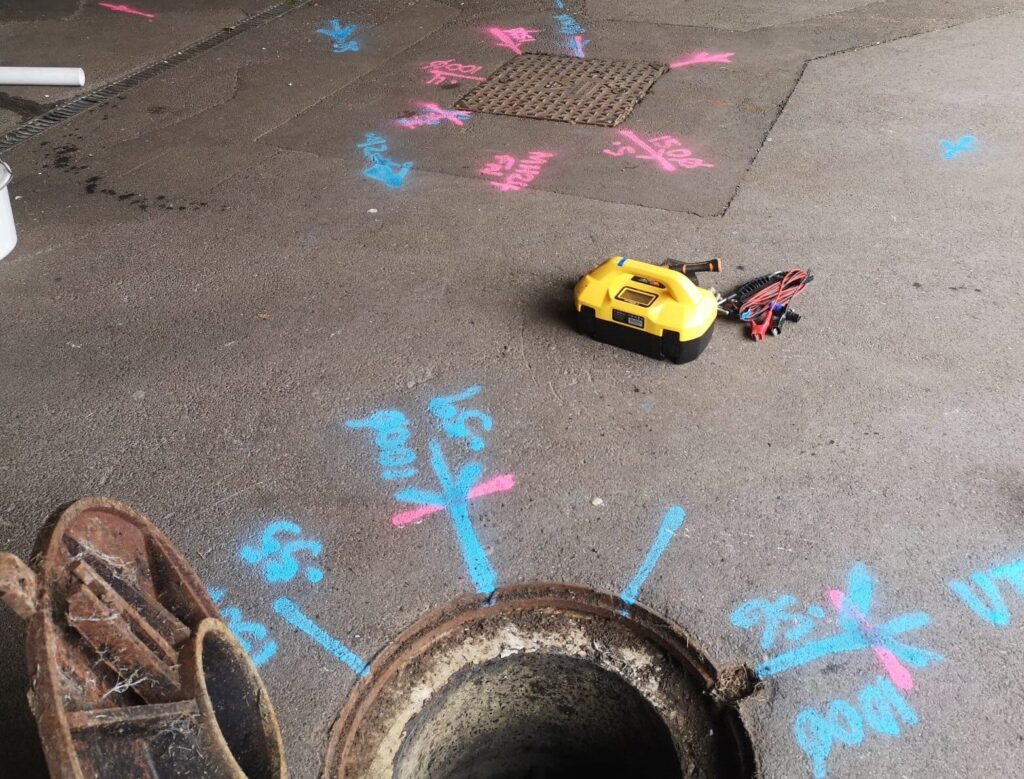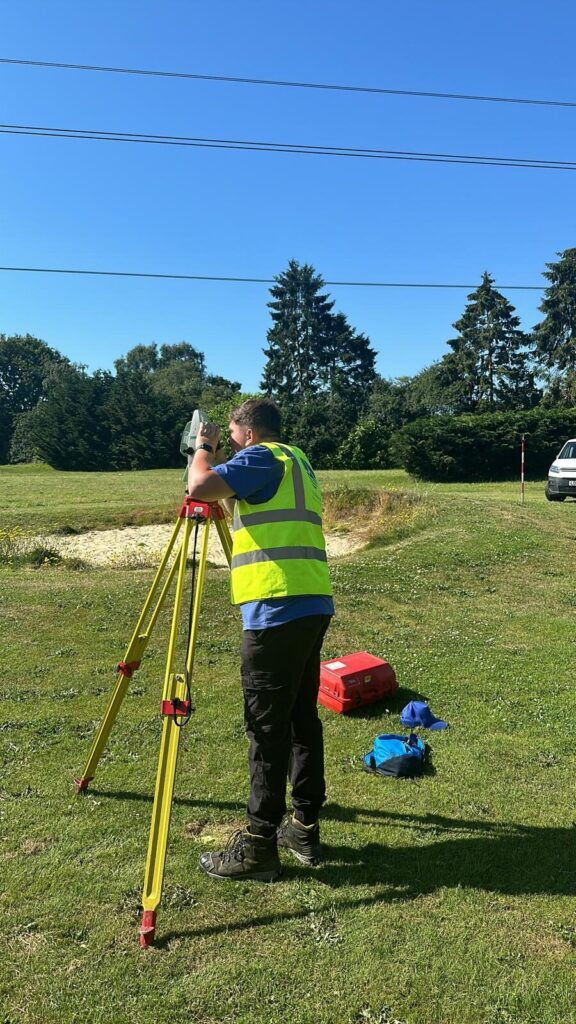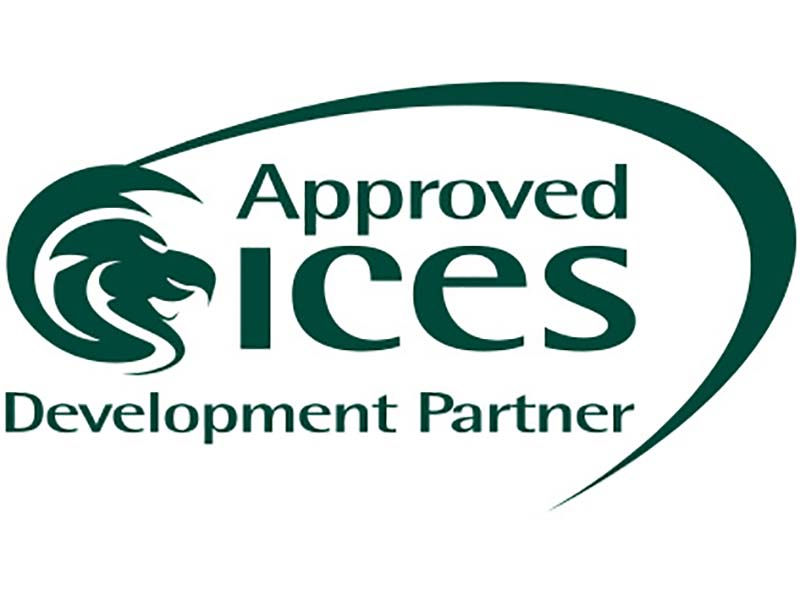Think you’ve got everything sorted before starting groundwork?
Think again.
We’ve seen it all — costly delays, safety incidents, even entire projects grinding to a halt. All because someone assumed those “old utility plans” from 1997 were still bang on.
Spoiler: they weren’t.
In fact, one job springs to mind — a site manager was absolutely convinced they knew what lay beneath. Until we turned up and found a live gas main that wasn’t on any map. It was right under the planned dig zone. That one survey? It saved them from blowing both their timeline and their budget sky-high.
So if you’re planning construction, refurbishment or anything that requires a digger’s bucket hitting soil — you need a pipe survey. No ifs, no buts.
In this guide, I’ll walk you through:
- What pipe surveys actually are (and the tech behind them)
- The three core types you need to know: EML, GPR, and CCTV
- When you need one (hint: sooner than you think)
- How much they cost (and why)
- How to choose the right provider (because not all surveyors are created equal)
Plus, I’ll share stories from the field to show just how critical a proper survey can be — the kind of stuff you don’t find in brochures.
Ready to avoid surprises and stay compliant?
Let’s get cracking.
What Exactly Are Pipe Surveys?
Pipe surveys — sometimes bundled under the broader term “utility surveys” — are a non-negotiable step in any project involving digging, building, or planning near underground services.
In plain English: they tell you what pipes and cables are under your feet, where they run, and what nick they’re in.
We’re talking everything from:
- Water mains
- Gas pipes
- Sewer lines
- Electric cables
- Telecom ducts
And the best part? We do it all without digging up half the site.
At Terrain Surveys, we use advanced detection kit to map buried utilities in stunning detail — cross-referencing buried services data with an above-ground site survey. The end result? A precise, layered plan that shows underground pipes in relation to surface features like roads, kerbs, buildings, and boundaries.
No guesswork. No maybes. Just accurate, reliable data you can actually build from.
But it’s not just about “where things are”.
Some pipes need a proper internal inspection — especially drains. That’s where we send cameras down to check for issues like cracks, blockages, root ingress or collapsed sections.
More on that in a sec — first, let’s break down the main types of pipe surveys you’ll want to know.
The 3 Pipe Survey Types You Need to Know
Different tools for different jobs — here’s a quick breakdown of the three primary methods:
1. EML (Electromagnetic Locator) Surveys
This is your bread-and-butter technique for finding metallic pipes and cables.
We use a CAT (Cable Avoidance Tool) paired with a Genny (signal generator). The Genny pumps an electromagnetic signal into the pipe or cable — and the CAT picks up that signal from above ground. No digging required.
Great for:
- Electric lines
- Telecoms
- Metal water pipes
- Plastic drains with tracer wires or sondes
Limitations? Non-metallic pipes (like clay or plain plastic) are tricky unless we’ve got a way in to insert a sonde.
That’s why we rarely rely on EML alone.
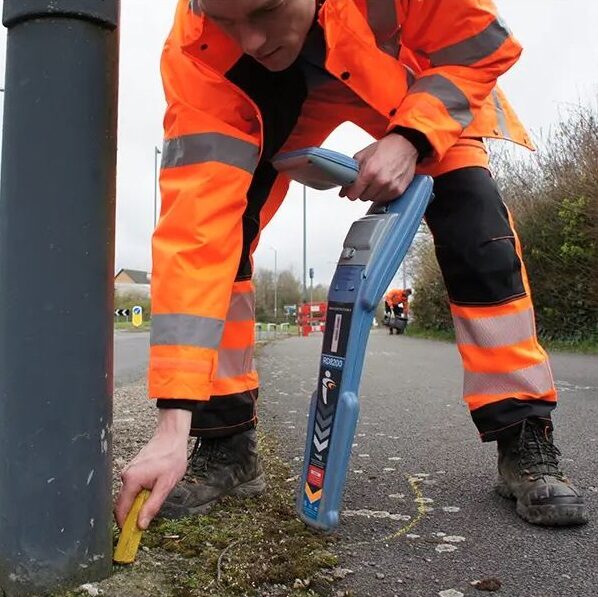
2. GPR (Ground Penetrating Radar) Surveys
Where EML listens for signals, GPR’s like shining a torch underground.
GPR units send short pulses of radio waves into the ground. When the waves hit something — say a pipe, cable or void — they bounce back, creating a trace we can read and interpret.
Perfect for:
- Non-metallic pipes (plastic, ceramic, concrete)
- Hidden foundations or voids
- Determining depth
GPR gives us a 3D picture, including pipe depth — but the quality of the scan depends on the soil type. Wet clay? Bit of a signal killer. Dry sandy soil? Spot on.
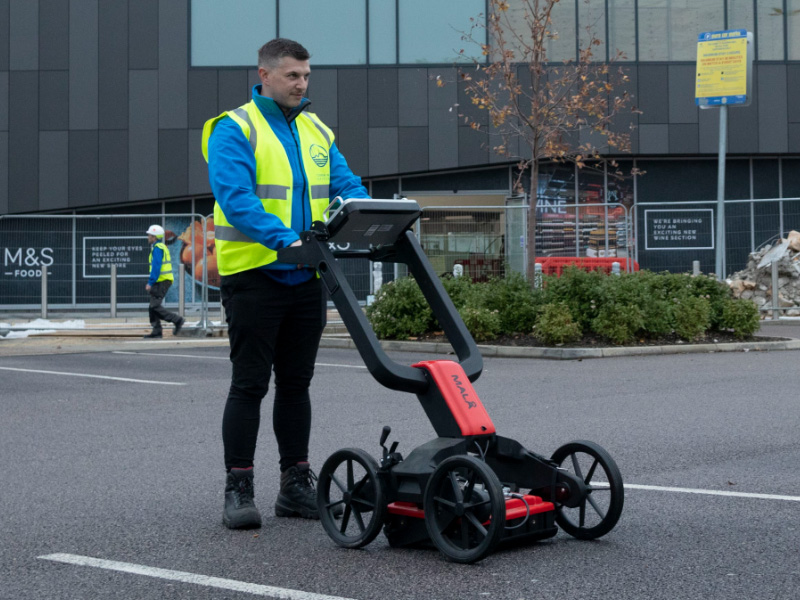
3. CCTV Drainage Surveys
This is where things get personal. Literally.
We send high-def cameras into the pipe to see what’s going on inside. No guesswork — just live footage of every inch of the line.
These surveys are brilliant for:
- Identifying damage or blockages
- Confirming pipe material and condition
- Satisfying compliance for Build Over Agreements or handovers
We often use CCTV in tandem with EML to trace the camera’s location from above — so we know exactly where and how deep the issue is.
No excavation. No disruption. Just answers.
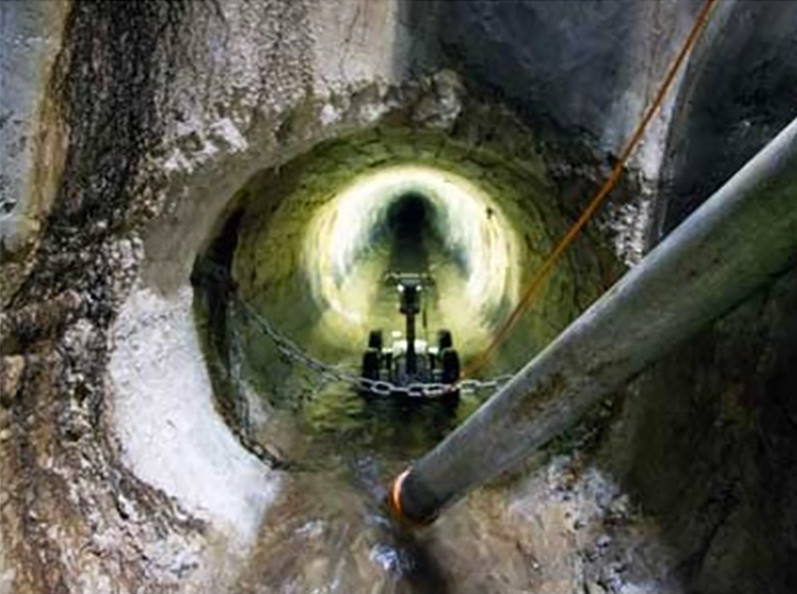
Each method brings something to the table — but used together, they give you a full, high-confidence view of what’s lurking underground.
Why Pipe Surveys Matter (More Than You Think)
You might be thinking, “Can’t I just use the old plans?” or “We’ve never needed one before…”
That mindset? It’s what leads to utility strikes, project delays, and massive fines.
Here’s why getting a pipe survey done before you dig is one of the smartest moves you can make.
1. Safety First — Avoid Utility Strikes
This is the biggie.
Striking a buried gas main or live electric cable isn’t just expensive — it’s dangerous. We’re talking serious injuries, fires, even fatalities.
In the UK, there are around 60,000 utility strikes a year — costing the economy a whopping £2.4 billion in damages and disruption.
It’s not just common sense — it’s law. The HSE’s HSG47 guidelines make it crystal clear: if you’re breaking ground, you’re legally required to locate buried services using plans and locating devices.
That means a pipe survey.
Real story for you: one contractor skipped the survey. Hit a buried electric cable. Knocked out power to 20+ homes. One worker ended up in hospital. The job was shut down, fines were issued, and the company’s reputation? Absolutely shot.
The cost of a pipe survey is a drop in the ocean compared to the damage an accident can cause.
2. Accurate Mapping = Better Designs
Even if you’re not worried about safety (you should be), accurate pipe mapping is essential for design and planning.
- You can’t design new foundations if you don’t know what’s underneath.
- You can’t safely run new services without knowing where the existing ones are.
Designing blind leads to redesigns, delays, and rework — all of which hit your timeline and your wallet.
We once surveyed a former industrial site with outdated plans. What the records said? Miles off. The reality? Pipes were metres away from where they were “meant” to be. Our survey helped the designers dodge multiple clashes — saving them thousands and keeping the build on track.
3. Stay Compliant With Building Regs and Water Authorities
Let’s say you’re building an extension over a sewer. Guess what?
Your local water authority will demand a Build Over Agreement — and that includes pre- and post-construction CCTV drain surveys.
Same with handing over newly built sewers or drainage systems. You’ll need to prove they’re structurally sound and defect-free — otherwise, utility companies won’t adopt them.
No pipe survey = no handover.
We’ve seen clients unable to get final sign-off because they skipped this step. A quick CCTV survey could’ve sorted it. Instead? Weeks of delay and extra cost.
4. Prevent Hidden Problems From Derailing Your Project
Ever had a digger grind to a halt because someone hit a mystery pipe?
We have. Many times.
One contractor we worked with hit a Victorian sewer — it wasn’t on any record. The road had to be closed for a week. Businesses were fuming. The rebuild cost five figures.
On another job, we mapped out every pipe in advance — even ones no one knew were there. That site finished on time, no incidents, and with full compliance. The difference? Two days of survey work upfront.
5. Peace of Mind and Accountability
A good pipe survey gives you certainty. You know where things are, what condition they’re in, and you’ve got a professional report to back you up.
And if you work with a qualified, insured survey firm (like us at Terrain), the liability for accuracy is on us — not you. That’s huge.
It’s not just about the data. It’s about having a trusted map that you, your team, and your contractors can work from confidently.
No guesswork. No nasty surprises.
Next, I’ll walk you through when you actually need a pipe survey — and why timing is everything.
When Do You Actually Need a Pipe Survey?
Short answer? Before you do anything underground.
But let’s break it down. Here are the most common (and critical) situations where a pipe survey isn’t just helpful — it’s essential.
1. Before Construction or Excavation
Foundations. Drainage. Piling. Landscaping.
If you’re disturbing the ground, you need to know what’s lurking below. Even small digs (like footings for a garden wall) can hit a pipe and cause chaos.
For major projects, we usually get called in at RIBA Stage 2 or 3 — before detailed designs are finalised. That way, engineers can design around existing utilities from day one.
Leave it too late, and you risk redesigns or, worse, digging into something that shouldn’t be touched.
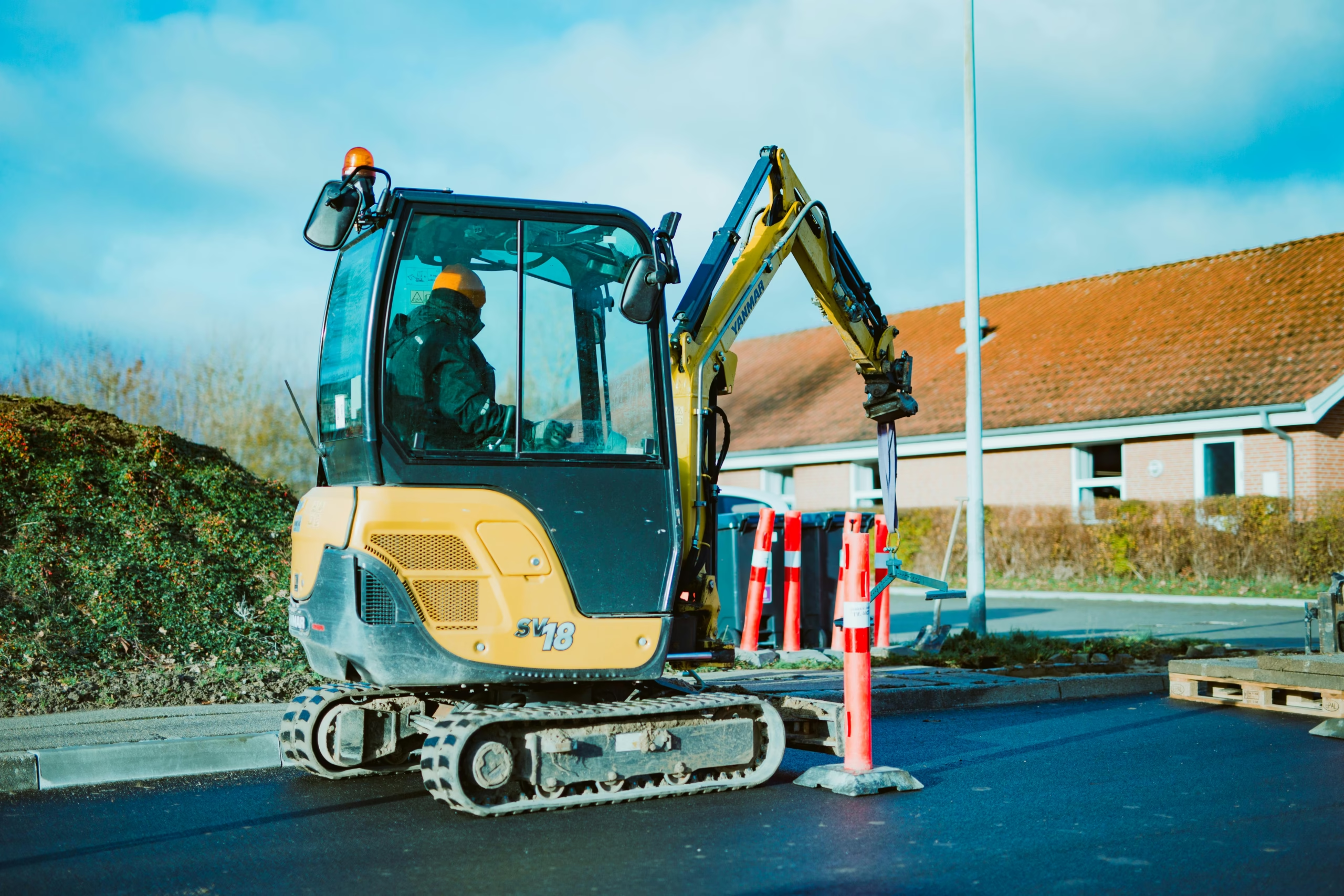
2. Planning an Extension Near Existing Utilities
Building over or near a sewer? You’ll need a Build Over Agreement.
That means a CCTV drainage survey before the build — to assess the pipe’s condition — and another one after, to confirm no damage was done.
No survey = no agreement = project paused.
Even if you’re not over a sewer, if there’s a gas main or telecom duct within a few metres of your works, get a pipe survey. You’ll need accurate locations to stay within clearance limits and avoid damaging key infrastructure.
3. Buying or Developing a Property
If you’re buying land — especially older buildings or brownfield sites — a pipe survey can reveal underground headaches before they become your problem.
- Are the drains sound?
- Are there old storm culverts running across the plot?
- Any services running under potential foundation zones?
This info can influence what you pay or how you design. Some buyers even use our CCTV drain reports to negotiate the price — “This cracked pipe will cost £2K to fix. Take it off the asking price.”
Smart move.
4. If You’re Dealing With Ongoing Issues
Persistent blockages? Damp patches? Smells? Subsidence?
Get a CCTV drain survey.
We’ve found:
- Tree roots splitting pipes
- Collapsed lines full of silt
- Random builders’ tools stuck in bends
Don’t just jet the blockage and hope for the best. Find out what’s causing it and fix the root issue. Literally.
5. For Compliance, Handover or Sign-Off
If you’re:
- Handing over new utilities to a council or water company
- Completing a development requiring as-built drawings
- Working on an industrial site with environmental audits
…you’ll probably need a pipe survey.
We’ve done countless handovers where the final sign-off was conditional on our drainage report. Without it? No adoption, no sign-off, no occupancy.
6. If Records Are Patchy or Outdated
Loads of older sites have zero reliable utility records. Or worse — a dusty plan from 1983 that shows a “possible” pipe somewhere.
We’ve had facility managers hand us a hand-drawn sketch on A4 paper, and say, “That’s all we’ve got.”
If that’s your situation, get a proper survey done. You’ll know where everything is, and you’ll finally have something trustworthy on file.
7. Before Deep Works (Piling, Boreholes, etc.)
Normal digging might only go a metre deep.
But piling, boreholes or sheet piling? You’re talking multiple metres down — into the territory of major utilities.
Even if you think you’re clear, we’ve seen piling rigs nearly breach deep brick drains and high-pressure water mains.
Survey first. Adjust designs. Save yourself a very expensive mistake.
Unsure?
get a survey.
It’s far better to spend a bit now and know, than to guess and regret it later.
Next up — we’ll look at what actually affects the cost of a pipe survey.
Pipe Survey Costs: What Affects the Price (And How to Get the Best Value)
Right — the million-pound question: how much is a pipe survey going to cost me?
Truth is, it varies. A lot.
But here’s a breakdown of the key factors that affect price — so you can plan (and budget) properly.
1. Survey Area Size
The bigger the site, the bigger the bill.
A small 10×10 metre patch? Might take half a day. An entire retail park or housing estate? We’re talking multiple survey days, maybe even multiple teams.
Surveyors usually price by the time on site, so defining the exact area you want covered is key.
Pro tip: Focus on critical zones only — no need to survey the back garden if you’re only digging the driveway.
2. Underground Congestion
Open field? Easy.
Inner-city high street with 19 different buried services and tight alleyways? Much slower going.
More complexity = more time = higher cost.
Heavily congested or “busy” sites require tighter scanning grids and multiple techniques to unpick overlapping services. You’ll also pay more if there are obstacles like parked vehicles, street furniture or live footpaths to navigate.
3. Survey Method(s) Required
Here’s the deal:
- A basic EML + GPR utility survey is one level of cost.
- Add a CCTV drainage inspection on top — and you’re into extra kit, time, and potentially a different crew.
Need access to confined spaces? That’s additional effort and kit.
Going for PAS 128 Level A (i.e., trial holes for visual confirmation)? That’s the most accurate — but also the most expensive, as it involves excavation.
Most surveys are Level B (using detection only), which is accurate enough for most jobs.
4. Ground Conditions and Depth
Hard ground, clay-heavy soil, or deep utilities mean:
- Slower survey progress
- Possibly different GPR kit (for deeper penetration)
- More time post-processing data
If your site’s a bit tricky — we’ll flag that up in the quote and build in a buffer to do the job right.
5. Site Access and Location
You’ll pay more if:
- The site is hard to reach (rural or remote)
- You need traffic management (cones, lane closures, permits)
- The site requires night or weekend access (for safety or disruption reasons)
- It’s a high-security facility (extra inductions, escorting, ID checks)
All of this adds time and coordination — which means a higher quote.
6. Deliverables and Drawing Requirements
Quick spray-marking on the ground? That’s one thing.
But if you want full CAD drawings, 3D BIM models, cross-sections, drainage condition reports, and photo logs — you’re asking for more time in the office.
That’s not a bad thing — but just be clear what outputs you need up front. Most clients want CAD plans, but the level of detail can vary.
7. Post-Processing and Interpretation Time
Raw GPR data looks like spaghetti to the untrained eye.
It takes hours (sometimes days) to analyse and cross-reference everything — especially on complex sites.
So yes, part of your quote is office time, not just what happens on site.
8. Experience and Kit Quality
Like most things in life — you get what you pay for.
Cheapest isn’t always best. Some firms cut corners with old gear or skip essential steps to hit a low price.
We’ve had to re-do “bargain” surveys where the client ended up paying twice — once for the cowboy job, and again to fix it.
Value matters more than cost.
Want to Save Money on Your Survey?
Here’s how to keep the budget under control:
- Define your area clearly — don’t get surveyed for things you don’t need.
- Share existing plans — even if they’re old, they give helpful context.
- Bundle surveys — need a topographical survey too? Do them together.
- Schedule smartly — avoid weekend work or awkward hours.
- Prepare the site — clear manholes, remove obstacles, and check for hazards.
And finally — ask for a quote breakdown. A good provider will explain every line item.
Next, I’ll show you how to choose the right pipe survey provider — because your results are only as good as the team behind them.
How to Choose a Pipe Survey Provider (That Won’t Let You Down)
Picking the right team to survey your site is just as important as deciding to do a survey in the first place.
Why? Because if the survey’s wrong — or incomplete — the consequences can be brutal: missed pipes, safety incidents, regulatory delays, or full-on rework.
Here’s how to separate the pros from the cowboys.
1. Experience and Track Record
First question to ask: How many of these have you done before?
A decent provider should have years of experience under their belt — and a solid portfolio of projects across different sectors.
Experienced surveyors know how to spot unusual features, interpret weird signals, and avoid false positives. They’ve seen it all — from old clay sewers to steel ducts inside plastic sleeves.
Red flag: Vague answers like “Yeah, we’ve done a few.” You want specifics.
2. Proper Qualifications and Accreditations
You wouldn’t hire an unlicensed electrician — don’t hire an unqualified surveyor either.
Look for:
- CICES or RICS membership (that’s the gold standard)
- PAS 128 capability
- Accreditations like Constructionline Gold, CHAS, or ISO 9001/45001
These show the company takes safety, quality and compliance seriously.
At Terrain Surveys, for example, our team are fully certified — including confined space entry, GPR calibration, and HSG47 underground safety training.
3. Modern Equipment
GPR and EML tech moves fast. If a firm’s still using kit from the noughties — walk away.
Ask:
- What GPR system do you use? (Multi-frequency antennas are a good sign)
- Do you use dual-frequency or multi-channel units?
- What camera systems do you run for CCTV drain surveys?
They don’t need to hit you with specs — but if they can’t name a brand or explain their kit, that’s a worry.
Modern equipment = faster, more accurate results.
4. Clarity on Deliverables
You should never be left guessing what you’re getting at the end.
Ask to see a sample deliverable — a drawing, a report, even a short demo video from a CCTV survey.
Look for:
- Clarity (can you read the drawing?)
- Detail (are depths, materials, and line types shown?)
- Professionalism (does it look like it was done in MS Paint or AutoCAD?)
Also check: can they provide 3D models, Revit outputs, or GIS formats if needed?
5. Good Communication (From Day One)
Do they:
- Ask questions about your site?
- Tailor their quote to your scope?
- Offer helpful advice (not just a templated response)?
A quality surveyor acts like a consultant, not just a technician. They’ll talk through options, recommend what’s needed (and what’s not), and guide you through the whole process.
You want someone who acts like a partner — not a yes-man.
6. Transparent Pricing and No Hidden Costs
Get a line-item quote. Ask what’s included and what’s not.
Ask:
- Will traffic management be extra?
- Is post-processing time included?
- What happens if additional survey days are needed?
A good firm will spell this out clearly. If someone gives you a suspiciously low price without a breakdown — assume corners are being cut.
7. Case Studies and References
Ask for testimonials, previous projects, or case studies in your sector.
Real-world examples are proof they can handle your job.
At Terrain, we’ve surveyed everything from college campuses and business parks to listed buildings and tight city streets — and we’re happy to share project examples.
8. Safety and Insurance Cover
Ask about:
- PPE and site safety standards
- Confined space protocols (if relevant)
- Professional indemnity insurance
If something goes wrong, you want to know they’re covered — and that the liability won’t fall back on you.
9. Local Knowledge (Bonus Points)
Not essential — but useful.
A team who knows your local area might already be familiar with the typical pipe layouts, materials used, or quirks of old networks.
It speeds things up — and helps avoid surprises.
So, choosing a supplier with experience in the local area can be beneficial sometimes. That’s why it might be prudent to choose a company who’s been around for a decade or more – chances are they’ll have some knowledge of your area from past jobs in that time.
Why Choose Terrain Surveys for Your Pipe Survey?
At this point, you know the score.
Pipe surveys aren’t just helpful — they’re critical to keeping your project safe, compliant and on track.
Now you need a provider who knows their stuff, brings the right tools, and cares about doing the job properly.
That’s where we come in.
Here’s what you get when you work with Terrain Surveys:
Over 20 Years’ Experience (And It Shows)
We’ve been doing this since 2004 — surveying sites from busy high streets to heritage buildings and sprawling new builds in every corner of the UK.
We’ve seen every underground curveball the UK can throw at us. You get a team that’s not guessing — we’re drawing on thousands of completed surveys.
Fully Qualified, Highly Trained Crew
All our surveyors are:
- HSG47-trained
- CICES-accredited
- Certified for confined space entry, first aid, and more
We’re also Constructionline Gold accredited — a sign we meet the highest industry standards for safety, competence and quality.
State-of-the-Art Gear (No Rusty Relics Here)
We only use the latest GPR systems, dual-frequency EML locators, and high-def CCTV camera units (with WinCan reporting).
Whether it’s tracing a hidden clay pipe or inspecting a 100-year-old sewer, we’ve got the kit to find it and map it.
Seamless, Integrated Surveys
Need topographical mapping and drainage inspection alongside your pipe survey?
We do the lot. One team, one point of contact, one clean set of drawings that tie everything together.
No need to juggle three subcontractors just to get a full site picture.
PAS 128-Compliant Methods (If You Need It)
We apply the rigour of PAS 128 on every job — desk studies, multiple detection methods, quality levels recorded, the lot.
Need formal PAS 128 deliverables? We’ll tailor the survey to meet your spec.
Clear Deliverables, No Guesswork
You’ll get:
- CAD plans (2D or 3D, your choice)
- Drainage condition reports (if CCTV used)
- Colour-coded utility drawings
- Summary report with key findings and limitations
- Executive overview for quick decision-making
All geo-referenced to your grid or OS level, ready to drop into design packages.
Speedy Turnaround + Solid Support
Need a team fast? We can often be on site within days.
Need advice after the survey? We’re happy to jump on a call or send over extra visuals to help you visualise results.
You’re not just another job number — we treat every project like it matters. Because it does.
Ready to Book?
Drop us a line today and we’ll talk you through what’s needed, offer honest advice, and send a tailored quote.
- Email: enquiries@terrainsurveys.co.uk
- Or use our contact form here
Whether it’s mapping for planning, safety, or compliance — we’ve got your back.
Let’s make sure your next dig doesn’t turn into a disaster.
Pipe Survey FAQs (No Fluff, Just Straight Answers)
Still got questions? Here’s a no-nonsense breakdown of the most common things we get asked about pipe surveys.
Q: What’s the difference between a pipe survey and a utility survey?
In most cases, they’re two sides of the same coin.
A utility survey is the umbrella term — covering all underground services: cables, ducts, pipes, you name it.
A pipe survey tends to focus more on pipes specifically — like water, gas, and drainage — and often includes checking the condition, not just the position.
But if you ask for either, most decent firms will clarify your needs and quote you for the right combo of GPR, EML and CCTV as needed.
Q: Will a GPR/EML survey find everything?
Almost everything — but not absolutely everything.
Even the best surveys come with limits. Some tiny or defunct services (like an old clay land drain or unmarked fibre cable) might slip through the net.
That said, a proper survey uses multiple methods, cross-checks with old plans, and flags any gaps or “unconfirmed” zones in the report — so you know where to stay cautious.
Want near 100% certainty? That’s where verification holes (PAS128 Level A) come in — actual trial pits to confirm what’s where. But that’s a separate job (and cost).
Q: Can GPR detect plastic pipes or fibre-optics?
Yes — mostly, but not always.
GPR works by detecting contrasts in material. If a plastic pipe stands out from the soil around it, GPR will usually pick it up — same with empty ducts or fibre-optic lines.
But if the pipe’s tiny, buried deep, or surrounded by similar material, it might not show clearly.
That’s why we pair GPR with EML and sondes/tracer wires where we can — as this gives us the best shot at spotting those tricky ones.
Q: Will a CCTV drain survey cause disruption?
Barely.
It’s completely non-invasive — no digging involved. We access the system via manholes or known entry points.
In some cases where a pipe is blocked, we might need to jet it clean first. Still tidy. No mess. No fuss.
Q: How long does a pipe survey take?
Depends on the size and complexity. But here’s a rough guide:
- Small site (house plot, short street): Half a day to one day.
- Medium site (commercial building, car park): 1–2 days on site, plus a day or two for processing and drawings.
- Large site (factory, campus, estate): Could be several days or more.
Need it fast? Let us know — we’ve turned around smaller jobs in under 48 hours when needed – all hands on deck.
Q: Do I need to provide anything on the day?
Just access — and a bit of a briefing.
Make sure we can get into all areas, lift manholes, and move about safely. If your site’s got security procedures, keys, or locked gates — sort access in advance.
If you or someone familiar with the site can walk us round at the start, even better. Your knowledge (like “that shed used to have an oil tank”) is golden.
We bring the rest — PPE, kit, scanners, cameras, the works.
Q: Will the survey damage the site or leave marks?
Not at all.
We use biodegradable spray paint or chalk to mark services on the ground if needed — handy for contractors. It fades naturally or can be removed with a little detergent and a wipe-down.
No digging. No drilling. No physical changes unless you’ve asked for trial holes (which is a separate process).
We’ll leave the site just as we found it — apart from clearer knowledge of what’s hidden underneath.
